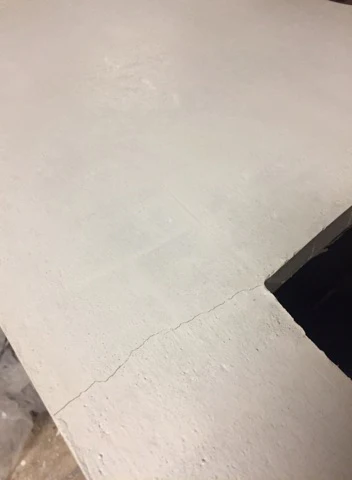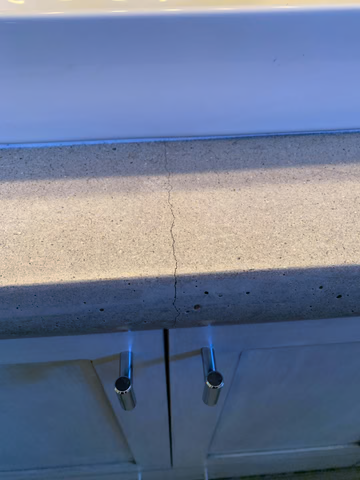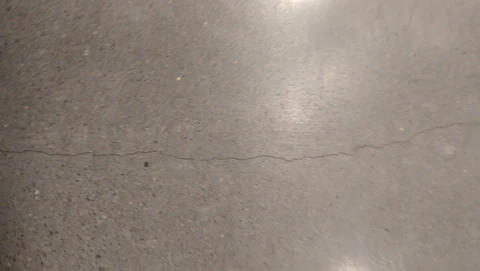Can Cracking be Prevented in a Concrete Countertop?
A question we get asked often is will my concrete countertop crack. Although we can never guarantee this, using proper reinforcement, additives, and installation techniques will greatly reduce or eliminate them, making a concrete countertop the most durable piece in your home.
Cracks can occur for a bunch of different reasons, some being within or without of your control. It’s usually the first sign of distress in concrete. These occurrences do not necessarily reflect adversely on either the adequacy or quality of the products or the countertop.
Over watering, heat, humidity, temperature, bad bases, and settling can all play a part. It is important to understand the reasons why cracking occurs, the type of crack formed, and cracks’ effects on structural stability so you can take the correct action to fix. This may mean leaving the crack alone or applying other suitable repair methods.
The most common types of cracks are hairline cracks. These mostly develop from the concrete shrinking or the concrete relieving built up stress from inadequate support. This will happen in the weakest points of the slab either around sinks where the concrete is thinner or from inside corners which can create a natural control joint. As long as there is reinforcement in the concrete, these cracks do not compromise the structural integrity and are purely cosmetic. Some find these slight irregularities appealing, instead of as flawed, giving the top a unique, aged appearance. Others prefer more of an unblemished look and for this there are options for repairing using a slurry paste such as our Counter-Patch. When patching a hairline crack, sometimes it needs to be widened a bit with a utility knife in order to get the slurry mix into the crack. Once the patch dries, a light hand sanding is done, and then you may proceed with staining and sealing, or just sealing.
So, what measures can be taken in order to reduce/prevent cracks? Properly reinforcing the countertop itself before the concrete is poured is the best way to reduce the likelihood of cracks. Reinforcing the concrete with rebar, welded wire, or something like our FG-50 Fiberglass Mesh is highly recommended. Not overwatering the concrete is important since too much water will weaken the concrete’s strength. Too much water will also increase the amount the concreter shrinks during the curing process which can lead to cracks. Making sure you are pouring in temperate environment where direct sunlight or high wind movement is avoided as much as possible. These environmental factors will cause accelerated curing on the top surface of the concrete which can cause it to curl and crack. If this cannot be avoided, slowing the cure process by wet curing or covering the concrete to hold in moisture can help prevent this. Finally, and most importantly, using a good quality mix design or additives with low shrinkage tendencies along with good finishing practices will help minimize and/or eliminate cracking leaving you with a concrete countertop that is not only aesthetically pleasing, but durable and long lasting for years to come.



